Full list of books
Products that Last; product design for circular business models
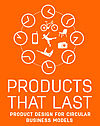
PRODUCTS THAT LAST offers readers an innovative and practical methodology to unravel a product's 'afterlife' and systematically scrutinize it for new opportunities. It introduces us to business models that benefit from opportunities offered by a much longer product life.
www.productsthatlast.nl
Conny Bakker, Marcel den Hollander, Ed van Hinte, Yvo Zijlstra. (2014)
Eco-efficient Value Creation; sustainable design and business strategies
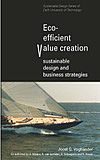
After LCA, Life Cycle Analysis, calculating the eco-costs of industrial production, and EVR, eco-efficient value creation, this book is what comes next, almost naturally: Eco-efficient value creation, EVC..
The subject of this book is how designers and engineers can contribute to the required shift towards sustainability and what this means to product portfolio strategies of companies. The way towards sustainability requires a double obligation of the designer of new products. Designers must create lower eco-costs, and at the same time higher value (a higher market price). We call this: eco-efficient value creation
Joost G Vogtländer, co-authored by: Ana Mestre, Rosan van de Helm, Arno Scheepens & Renee Wever. (2013)
The Power of Design: Product Innovation in Sustainable Energy Technologies

The Power of Design offers an introduction and a practical guide to product innovation, integrating the key topics that are necessary for the design of sustainable and energy-efficient products using sustainable energy technologies.
Product innovation in sustainable energy technologies is an interdisciplinary field. In response to its growing importance and the need for an integrated view on the development of solutions, this text addresses the functional principles of various energy technologies next to the latest design processes and innovation methods.
From the perspective of product applications, the book provides clear explanations of technologies that are significant for product integration, such as batteries, photovoltaic solar energy, fuel cells, small wind turbines, human power, energy saving lighting, thermal energy technologies in buildings, and piezoelectric energy conversions. The design processes and innovation methods presented in this book include various approaches ranging from technical, societal and creative methods that can be applied in different stages of the design process.
Reinders, Diehl, Brezet (Eds) (2013)
Waste electrical and electronic equipment (WEEE) handbook
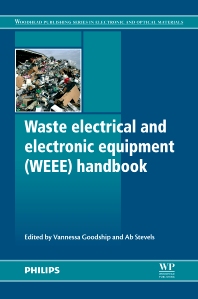
Electrical and electronic waste is a growing problem as volumes are increasing fast. Rapid product innovation and replacement, especially in information and communication technologies (ICT), combined with the migration from analog to digital technologies and to flat-screen televisions and monitors has resulted in some electronic products quickly reaching the end of their life. The EU directive on waste electrical and electronic equipment (WEEE) aims to minimise WEEE by putting organizational and financial responsibility on producers and distributors for collection, treatment, recycling and recovery of WEEE. Therefore all stakeholders need to be well-informed about their WEEE responsibilities and options. While focussing on the EU, this book draws lessons for policy and practice from all over the world.
- draws lessons for waste electrical and electronic equipment (WEEE) policy and practice from around the world
- discusses legislation and initiatives to manage WEEE, including global e-waste initiatives, EU legislation relating to electronic waste, and eco-efficiency evaluation of WEEE take-back systems
- sections cover technologies for refurbishment, treatment and recycling of waste, sustainable design of electronics and supply chains, national and regional waste management schemes, and corporate WEEE management strategies
- designed to be used as a reference by policy-makers, producers and treatment operators in both the developed and developing world
Edited by V Goodship, University of Warwick, UK and A Stevels, Delft University of Technology, The Netherlands (2012)
a quick reference guide to LCA DATA and eco-based materials selection
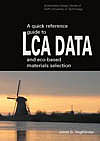
LCA: a practical guide for students, designers and business managers

Life Cycle Assessment (LCA), a well defined method to calculate the environmental burden of a product or service, has been made so complex that it seems to be a job for specialists only.
This 'Practical Guide' to LCA gives a hands on approach for students, designers, architects, and business managers with limited time. Starting with the common sense, and building on it with practical solutions for, sometimes, complex issues (like recycling).
To assess the sustainability of your innovative ideas, practical guidance is given during the decision making process. It does not take a lot of time and a lot of money. The 'Fast Track' LCA of this guide can be made in hours, and is just as accurate as the classical LCA.
This guide shows also the way to enable cradle-to-cradle calculations:
- It provides practical solutions to calculate the impact of recycling
- It shows how to start with LCA in the early ('fussy') design stages ('Life Cycle Design')
Vogtländer, 2010. VSSD
LCA-based assessment of sustainability: the eco-costs/value ratio (EVR)
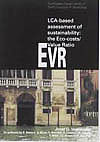
Bamboo, a Sustainable Solution for Western Europe
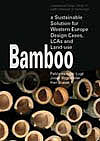
Dutch Design meets Bamboo
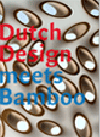
A sustainable material, bamboo lends itself to an array of new possibilities for advanced applications outside the traditional handicraft products. About twenty designers were invited to create original and high quality bamboo designs, both individually and in collaboration with interested companies. The surprising fruits of this project are examined in this document which also aims at disseminating further knowledge about this versatile material through essays and images.
Design for Sustainability; a practical approach for developing economies
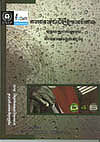
UNEP manual
Design Cork for Future, Innovation and Sustainability
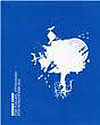
Ana Mestre (2008) Design Cork for Future, Innovation and Sustainability. Sus Design.
The Eco-cost/Value Ratio: Materials and Ecological Engineering

Analysing the sustainability of product and services by means of a LCA based model.
Vogtländer, Hendriks (2002)
Milieugerichte productontwikkeling
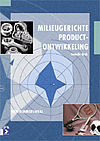
Dit boek behandelt de milieuaspecten van producten, alsook de vraag hoe deze aspecten van invloed zijn op de industriële ontwikkeling van deze producten. Ontwerpers en beleidsmakers die zich met deze vragen bezighouden, zijn bezig met milieugerichte productontwikkeling, of ecodesign. Centraal in dit boek staat de totale milieubelasting van een product of dienst, gezien over de gehele levensloop. (Remmerswaal, 2000/2002, in Dutch)
Kathalys; Vision on Sustainable Product Innovation

H. Brezet, Ph. Vergragt, T. van der Horst (2001)
Ecodesign: A Promising Approach to Sustainable Production and Consumption

Brezet & Van Hemel (1997) Ecodesign: A Promising Approach to Sustainable Production and Consumption. UNEP
Eco-design: acht voorbeelden van milieugerichte produktontwikkeling
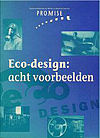
NOTA, Nederlandse Orgaisatie voor Technolgisch Aspectonderzoek
Harry te Riele en Albert Zweers, met bijdragen van Joram Krozer ... [et al.].
Published 1994, februari by TNO in samenwerking met fac. Industrieel Ontwerpen in Delft.
(in Dutch)
Adventures in Ecodesign of Electronic Products 1993 - 2007
Design for Sustainability manual written for United Nations Environmental Program. Crul, Diehl & Ryan (eds.) 2009
UNEP manual

Design for Sustainability manual written for United Nations Environmental Program. Crul, Diehl & Ryan (eds.) 2009
Artefacts
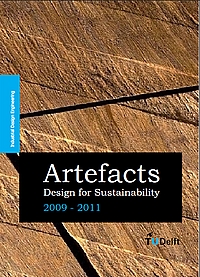
Work of students, PhD researchers and International Projects (2009-2011)